If you’re someone who has grappled with pet allergies or a family that dreams of welcoming a feline friend without endless sneezing and watery eyes, then hypoallergenic cats might just be the perfect solution. Now, before diving in, let me clarify—there’s no such thing as a completely allergen-free cat, despite what some breeders may claim. Hypoallergenic cats produce fewer allergens, making them easier for allergy sufferers to tolerate. In this article, I’ll take you on an in-depth journey covering everything you need to know about hypoallergenic cats—from separating myth from fact, to showcasing the top five breeds best suited for families, and the practical grooming and training tips that help reduce allergen exposure.
Whether you’re a seasoned cat lover or a first-time pet owner navigating allergy concerns, this guide is your practical roadmap to choosing the right hypoallergenic cat breed, managing allergies effectively, and ensuring your new feline family member thrives in a happy, healthy home environment. We’ll unpack the science behind allergens, explore breed personalities perfect for children, and arm you with actionable advice you won’t want to miss. So, let’s pounce right in and explore the world of hypoallergenic cats together!
Understanding Hypoallergenic Cats: Myth vs. Reality
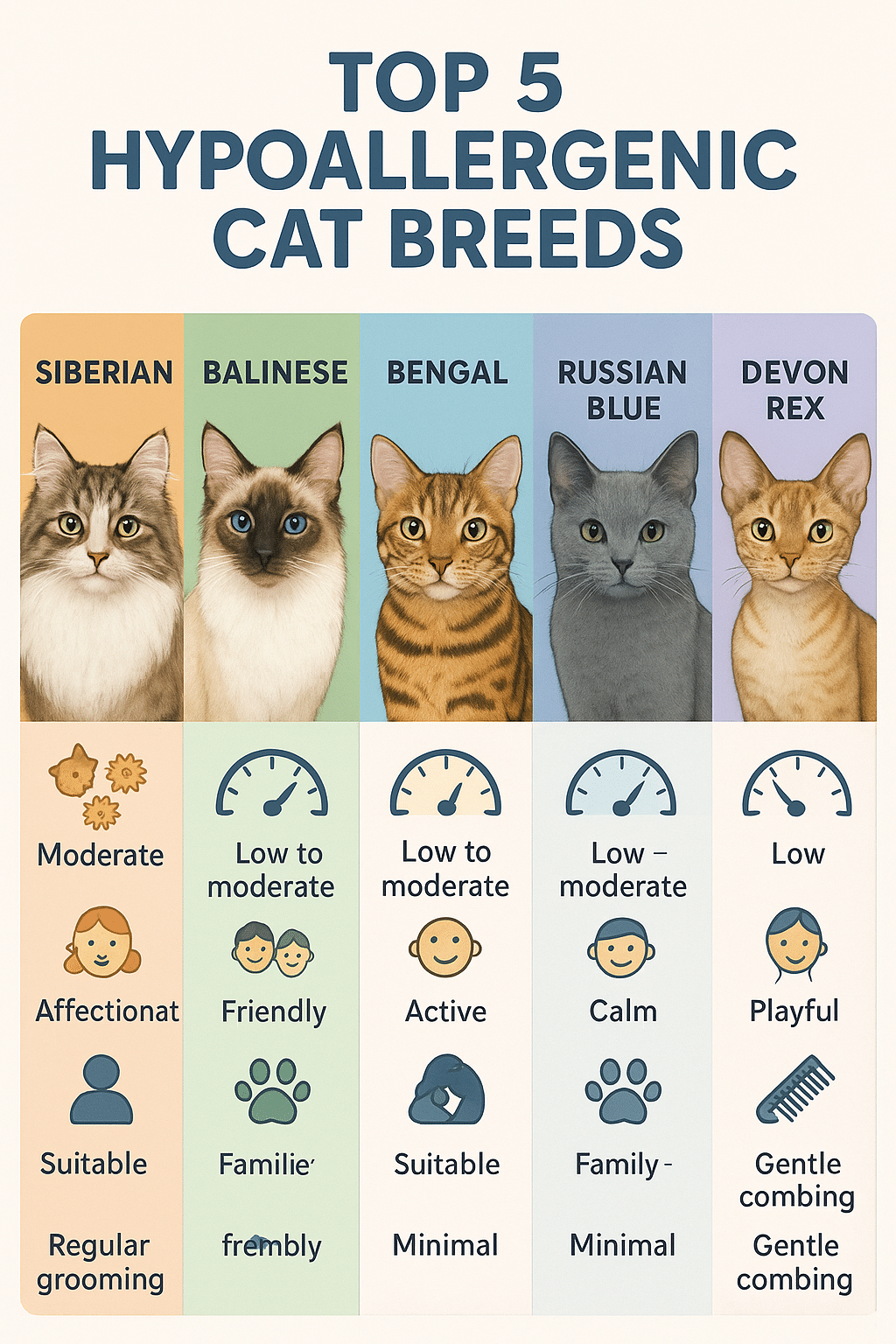
What Does Hypoallergenic Mean in Cats?
The term “hypoallergenic” literally means “below usual allergen levels,” but this doesn’t guarantee zero allergies. When it comes to cats, hypoallergenic means breeds that typically produce fewer allergenic proteins or shed less dander, reducing the likelihood or severity of allergic reactions. Cat allergens mainly come from a protein called Fel d 1, found in cat saliva, skin, and sebaceous glands—not just hair or fur as many believe.
Did you know that Fel d 1 can linger in the air, stick on furniture, and survive for long periods? That’s why people tend to react even to breeds with less fur. Still, hypoallergenic cats are recognized as a better option for allergy sufferers because they emit less Fel d 1, shed less, or have coats that don’t spread allergens as widely.
The Role of Fel d 1 Allergen and Cat Dander
Fel d 1 is the predominant culprit behind cat allergies. This sticky glycoprotein is secreted mostly through saliva and skin oils. When cats groom themselves, they deposit Fel d 1 onto their fur. These tiny allergen particles become airborne as the fur sheds, or when dander — tiny flakes of dead skin — disperses in your environment.
For families allergic to cats, understanding the role of Fel d 1 is crucial. It explains why even cats with minimal fur can still cause allergic reactions. Environmental management and breed selection that control Fel d 1 exposure dramatically improve comfort and safety for allergy-prone individuals.
Why No Cat is Truly Allergen-Free
Despite popular belief, no cat breed is completely allergen-free. Even breeds labeled hypoallergenic produce Fel d 1 to some degree. Some individuals tolerate these cats well, while others with severe allergies might still experience symptoms.
Recognizing this limitation is essential before adopting. Allergy tests and spending time around the specific breed can help predict your body’s response. Adoption centers and breeders often encourage trial periods, or “cat fosters,” so families can test real-life allergen impact before committing.
Top 5 Hypoallergenic Cat Breeds for Families and Allergy Relief
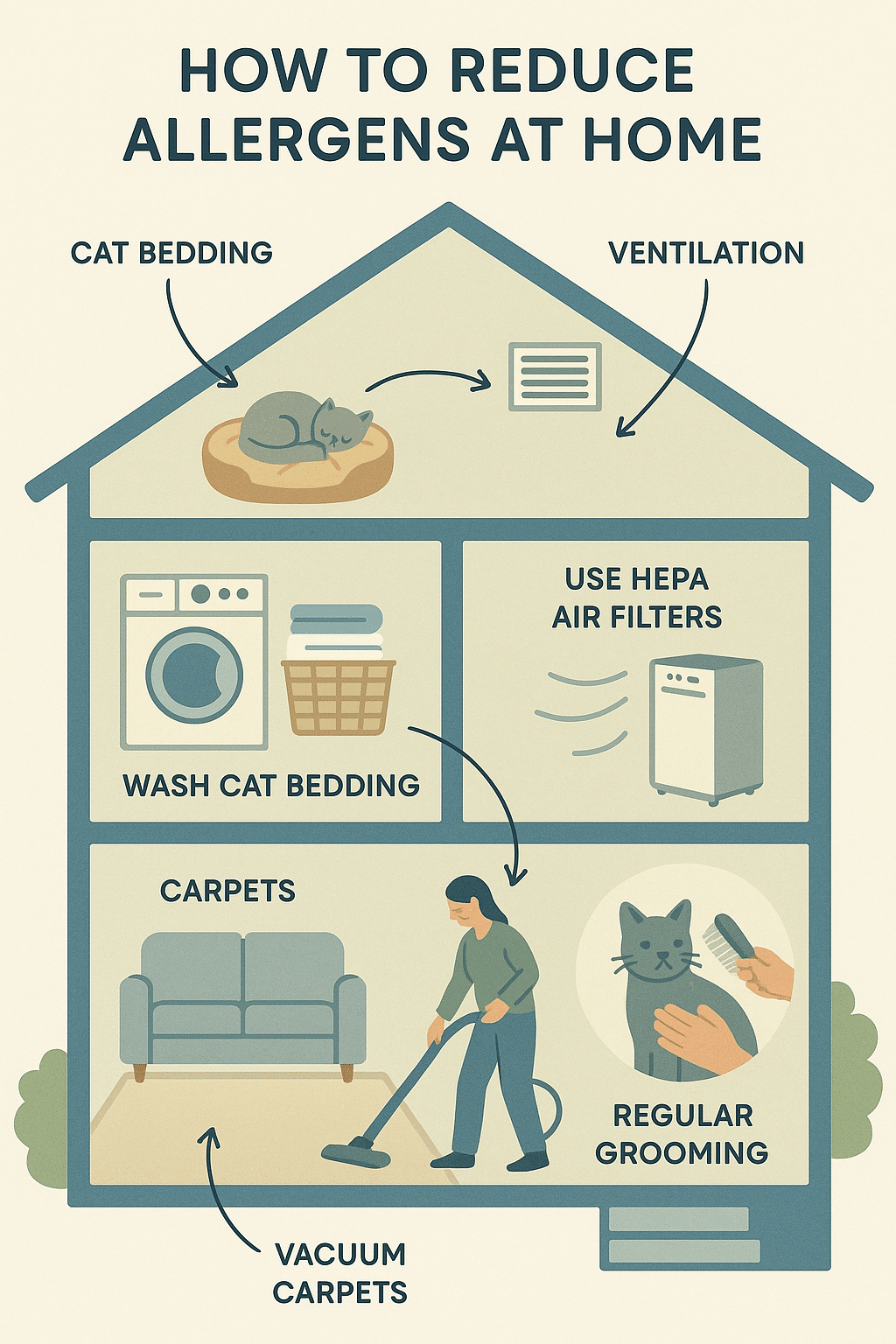
Let me walk you through five of the best hypoallergenic cat breeds, each with unique traits and allergy-friendly features. These breeds are widely recognized for producing less Fel d 1 or shedding less dander, while also being fantastic companions for families.
Siberian Cats: Natural Allergy Moderators with Friendly Disposition
Breed Characteristics and Allergen Production
The Siberian cat is often regarded as one of the best hypoallergenic options out there. Originating from Russia’s harsh climates, Siberians possess a thick triple coat but surprisingly produce much less Fel d 1 allergen. Studies have measured these cats as releasing lower allergen quantities compared to average domestic cats, likely due to genetic variations controlling Fel d 1 protein production.
Despite their dense coat, Siberians shed less dander that carries allergens—helping families breathe easier. Their fur texture also traps allergens close to the skin, reducing airborne dander spread.
Suitability for Families and Children
Siberian cats have a calm, playful, and affectionate temperament that makes them perfect family companions. They engage well with children, tolerate handling gently, and adapt to active households. Their robust nature means fewer health problems, translating to reliable companionship.
If you’re looking for a hypoallergenic cat breed that combines allergy relief with engaging personality, Siberians are top contenders.
Balinese Cats: The “Longhaired Siamese” with Lower Allergen Levels
Personality Traits and Family Compatibility
Often dubbed the “longhaired Siamese,” Balinese cats share the Siamese’s social and vocal nature but boast a silky coat that is surprisingly hypoallergenic. Their lower Fel d 1 production is attributed to genetics, making them ideal for allergy sufferers who enjoy talking and interactive cats.
Balinese cats tend to thrive in family environments. They crave human attention, enjoy playtime, and form strong bonds with kids. Their affectionate nature ensures they become lifelong companions who elevate the joy of pet ownership without overloading your allergy symptoms.
Devon Rex Cats: Curly-Coated Companions with Allergy Benefits
Grooming Needs and Training Tips
With their distinct wavy coats and large expressive eyes, Devon Rex cats look like little pixies. Their single-layer curly fur sheds minimally, which contributes to their hypoallergenic reputation. Since they lack the usual thick undercoat, allergen spread is significantly dampened.
Devon Rex cats enjoy interactive play and require gentle training to harness their playful energy. When grooming, use hypoallergenic shampoos and occasional baths to keep dander and allergens under control. Training them early helps make cleaning easier and reduces unwanted scratching or agitation that can increase allergen release.
Cornish Rex Cats: Playful Hypoallergenic Cats with Unique Coats
Managing Allergens through Coat Maintenance
Similar to the Devon Rex but slimmer in build, Cornish Rex cats have soft, curly coats and minimal shedding. Their fine fur traps fewer flakes, making them manageable for allergy sufferers.
Routine grooming with gentle wipes or sprays designed for hypoallergenic cats keeps their coat clean and allergen production low. Families with kids will find Cornish Rex cats energetic but affectionate, adding a fun-loving dynamic to the household without excessive allergen buildup.
Sphynx Cats: Hairless but Not Allergen-Free, Ideal for Some Allergy Sufferers
Special Care and Environmental Considerations
The iconic hairless Sphynx is often the first guess for allergy sufferers. However, they still produce Fel d 1 through their skin oils and saliva. Their lack of hair means allergens are not trapped but can spread quickly in the environment. For some people, this reduces symptoms; for others, it makes things worse.
Sphynx cats require special skin care—including regular bathing to remove oils and allergens—and warm living areas. They’re friendly, often described as “dog-like” in loyalty, and love cuddling. If your family wants a unique, social pet and can maintain their care needs, Sphynx cats make an intriguing hypoallergenic choice.
How to Choose the Right Hypoallergenic Cat Breed for Your Family
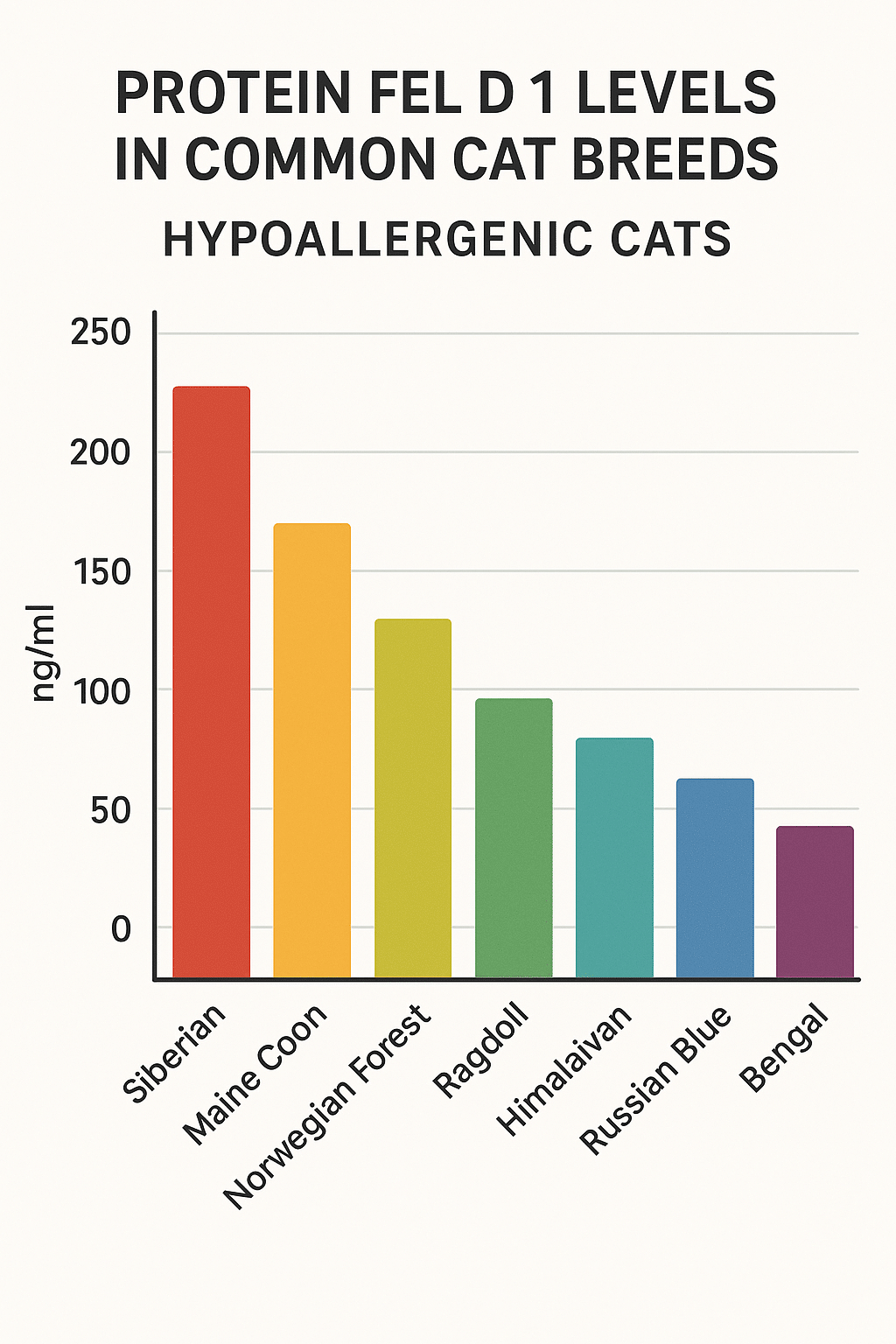
Assessing Allergy Severity and Personal Sensitivities
Choosing a hypoallergenic cat starts with honest evaluation of your or your family members’ allergy severity. Spend time visiting shelters, breeders, or friends who own hypoallergenic cats. Using allergy test kits or consulting allergists helps set realistic expectations.
If reactions are mild, a breed like a Siberian or Balinese may be manageable. For more sensitive people, breeds like Devon Rex or even the Sphynx may offer better tolerance. Remember, no guarantees—but understanding personal triggers is step one.
Considering Temperament and Compatibility with Children
Hypoallergenic breeds vary in personality—some are more playful and energetic, others laid-back and reserved. If you have children, breeds with patience and tolerant behavior (Siberians and Balinese) often work best. Devons and Cornish Rexes enjoy the playfulness children bring but may require more attention.
Matching temperament to your family dynamics ensures a safe and joyful environment for both cats and kids.
Evaluating Lifestyle and Grooming Commitment
A hypoallergenic cat still needs proper grooming and care. Curly-coated breeds like Devon and Cornish Rex require less frequent brushing but may need bathing to reduce dander buildup. Hairless Sphynx needs regular skin baths.
Busy families should consider breeds with lower grooming needs or the ability to adapt to your schedule. Balance allergies with daily routines to choose a cat that fits your lifestyle.
Training Tips and Behavioral Guidance for Hypoallergenic Cats
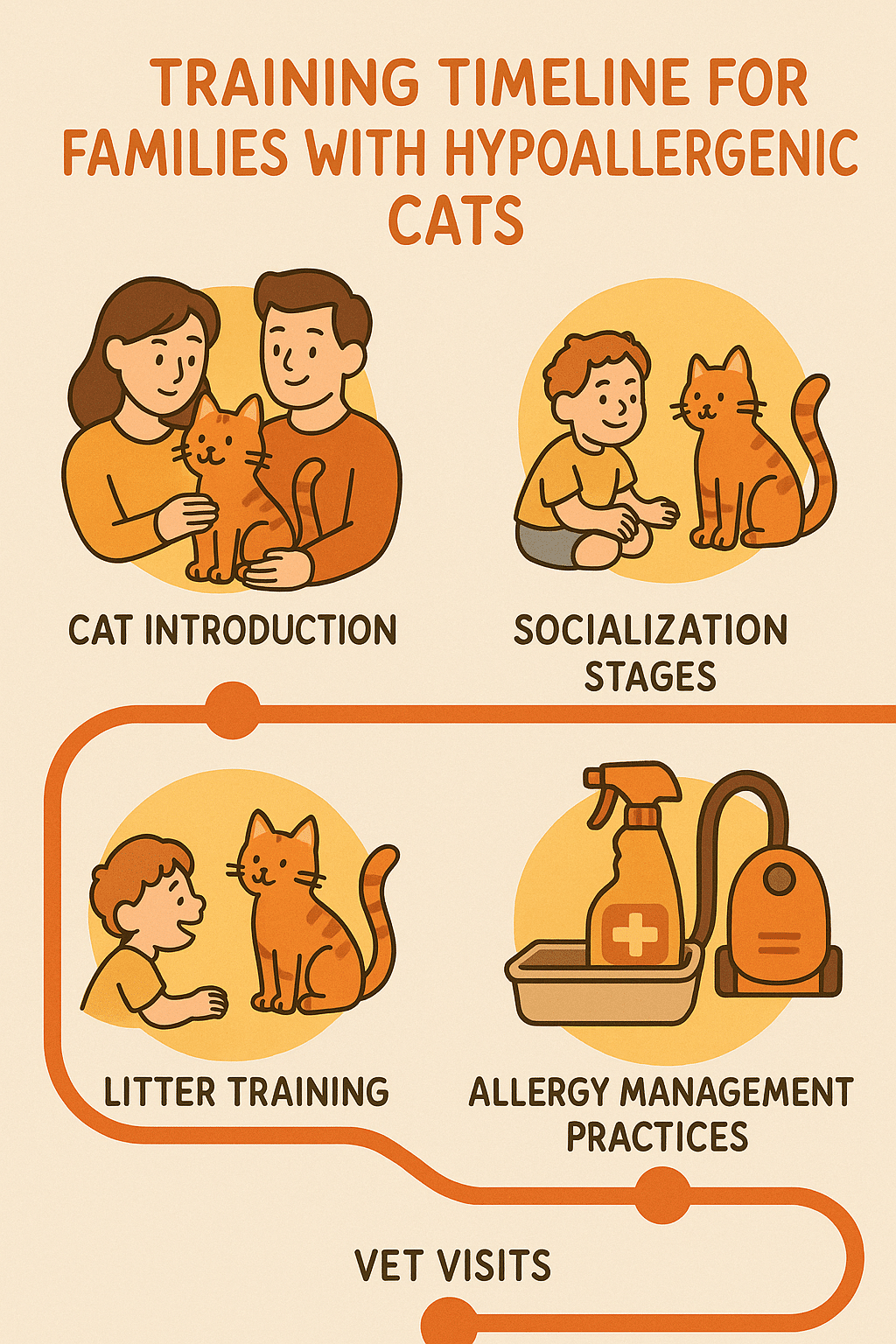
Early Socialization for Allergy-Friendly Interactions
Socializing cats from a young age reduces stress, which can otherwise increase allergen production. Introduce your hypoallergenic cat gently to family members, including children, to promote calm behavior and reduce over-grooming or scratching.
Positive reinforcement and consistent routines make training easier and foster good hygiene habits.
Effective Litter Box Training and Odor Control
Keeping litter boxes clean limits airborne irritants that can worsen allergies. Hypoallergenic cats typically adapt quickly to litter, especially when introduced early. Use low-dust, unscented litters to reduce respiratory triggers.
Regularly sanitizing litter spaces and using air purifiers nearby also helps maintain a healthier home.
Encouraging Play and Exercise for Healthy Coat and Reduced Dander
Active cats tend to have healthier coats and less excess oil, indirectly controlling allergens. Incorporate playtime with toys, scratching posts, and safe climbing structures to keep your hypoallergenic cat physically and mentally stimulated.
Behavioral enrichment decreases stress-related grooming, reducing unwanted allergen release.
Grooming Strategies to Minimize Cat Allergens at Home
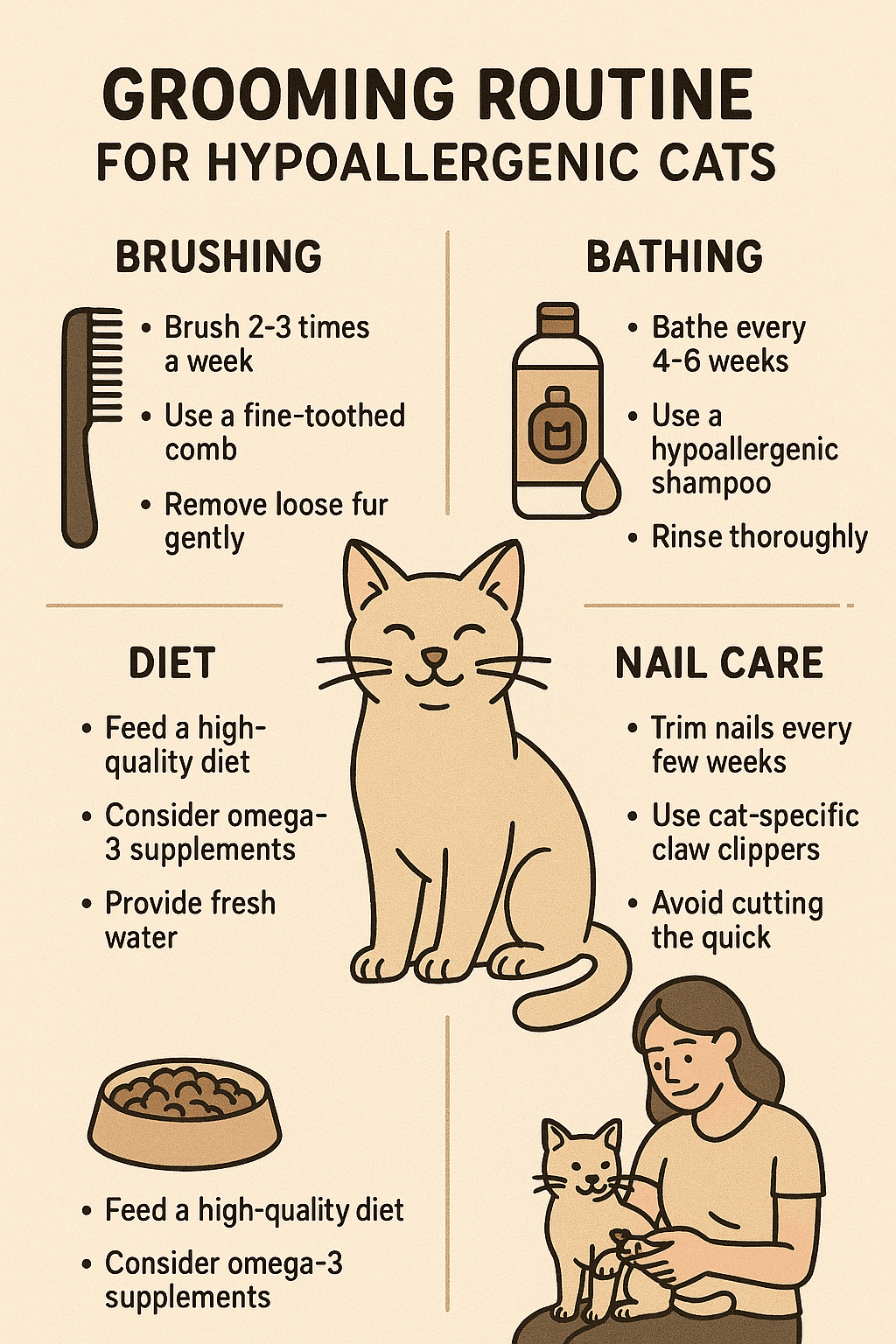
Regular Bathing and Coat Maintenance Techniques
Bathing hypoallergenic cats every 2-4 weeks can significantly reduce Fel d 1 allergens on fur and skin. Use gentle hypoallergenic cat shampoos formulated to maintain skin health while combating allergens.
For curly-coated breeds, moisturizing conditioners prevent dryness and promote a cleaner coat. Always brush lightly between baths to remove loose hair and dander.
Using Allergy Relief Products and Hypoallergenic Cat Shampoos
Several pet products specifically target allergen control. Allergy-relief sprays can neutralize Fel d 1 proteins on fur. Shampoos with enzymes and natural ingredients reduce allergen buildup.
Ask your vet for recommended products that won’t irritate sensitive skin and keep allergens at bay.
Environmental Cleaning: Reducing Dander and Fel d 1 Exposure
Dander settling on fabrics like curtains, carpets, and upholstery is a big allergy trigger. Vacuum frequently with a HEPA-filter vacuum designed to trap fine particles. Wash bedding, furniture covers, and cat items like blankets weekly.
Air purifiers with HEPA filters placed in common areas further reduce airborne allergens, creating a safer environment for allergy sufferers.
Managing Allergies with Hypoallergenic Cats: Practical Advice
Using Air Purifiers and HEPA Filters in Cat Areas
Air purifiers specifically designed with HEPA filters capture microscopic Fel d 1 particles circulating in your home’s air. Placing them near cat resting spots or frequented rooms noticeably reduces allergy symptoms.
Maintain air filters regularly for peak performance and improved indoor air quality.
Creating Cat-Free Zones for Allergy Sufferers
Designating cat-free zones in your home—especially bedrooms and children’s play areas—helps protect vulnerable family members. Use physical barriers or close doors to minimize allergen exposure.
Regularly clean these spaces to keep allergens out and provide sanctuary for sensitive individuals.
Collaborating with Allergists for Personalized Allergy Management
For families managing allergies, partnering with an allergist is invaluable. They provide tailored strategies like immunotherapy, medications, and environmental modifications specific to your cat breed and symptom severity.
This collaboration builds confidence in hypoallergenic cat ownership and enhances quality of life.
Comparing Hairless vs. Curly-Coated Hypoallergenic Cats
Allergen Levels and Grooming Differences
Hairless breeds like Sphynx don’t trap allergens in fur, but produce oily secretions requiring regular bathing to remove Fel d 1. Curly-coated breeds like Devon and Cornish Rex shed very little, and their unique coats help keep allergens contained.
Grooming for hairless cats is more skincare focused, while curly-coated cats benefit from gentle brushing and hygiene maintenance.
Suitability for Different Allergy Profiles and Family Dynamics
If your family prefers minimal shedding but can manage skin care, hairless cats are great. However, those allergic to skin secretions or oils might react more despite lack of fur. Curly-coated cats suit families with mild to moderate allergies, balancing playfulness and easier grooming.
Evaluating allergy triggers alongside lifestyle preferences will guide you to the best hypoallergenic fit.
Unique Insights: Environmental and Behavioral Factors Affecting Allergen Levels
Influence of Sterilization and Hormonal Changes on Fel d 1 Production
Research suggests that neutered or spayed cats may produce less Fel d 1 allergen due to hormonal changes. This underscores the importance of sterilization not only for population control but also potentially reducing allergen levels in your home.
Impact of Diet and Stress on Allergen Secretion
A balanced diet rich in omega fatty acids supports healthy skin and coat, possibly reducing dander and allergen production. Stress increases grooming or skin oil secretions, worsening allergies—thus enriching emotional care benefits both your cat and family health.
Behavioral Patterns that Affect Dander Spread and Allergen Distribution
Cats that groom excessively or scratch frequently shed more dander, increasing allergen spread. Providing interactive toys, scratching posts, and calming environments helps control behaviors that amplify allergen release.
Myths and Misconceptions About Hypoallergenic Cats Debunked
Common False Claims About Allergy-Free Cat Breeds
You might hear that Russian Blue or Javanese cats are “allergy free.” However, scientific studies show all cats produce Fel d 1—none are truly allergen-free. Misunderstanding this leads to frustration when allergies flare up.
Scientific Evidence Behind Hypoallergenic Breed Claims
Studies confirm certain breeds produce significantly less Fel d 1, validating hypoallergenic claims. Siberian and Balinese cats show measurable lower allergen production, making them better choices for allergy sufferers, but personal tolerance is the key factor.
Final Considerations for Families Seeking Allergy-Friendly Cats
Balancing Allergy Relief with Emotional and Social Benefits of Cat Ownership
Welcoming a cat into your family is about more than allergens—it’s about companionship, emotional support, and joy. Hypoallergenic cats offer a balanced approach that can bring the warmth of a pet with manageable allergy symptoms.
Preparing Your Home and Family for a Successful Cat Adoption
Before adoption, discuss allergy expectations openly, prepare your home with designated cat zones, grooming supplies, and cleaning routines. Educate your family on interacting gently with the new cat and maintaining allergy-reducing habits.
With thoughtful preparation and realistic expectations, hypoallergenic cats can transform your home into a haven filled with purrs and smiles, free from allergy fears.
FAQs about Hypoallergenic Cats
Q1: What are the best hypoallergenic cat breeds for allergy sufferers with children?
A1: Siberian and Balinese cats rank high as hypoallergenic breeds suitable for families with children due to their friendly nature and lower Fel d 1 production.
Q2: How can I reduce allergens from hypoallergenic cats at home?
A2: Regular bathing, grooming, using allergy relief sprays, frequent cleaning of cat areas, and air purifiers with HEPA filters help reduce allergen buildup.
Q3: Is the Sphynx cat completely allergy-free?
A3: No, Sphynx cats still produce allergens through skin oils and saliva, but some people with mild allergies find them more tolerable with proper skin care.
Q4: How do curly-coated cats like Devon Rex differ in allergen levels compared to other breeds?
A4: Curly-coated cats shed less fur and dander, which lowers allergen spread, making them a good choice for allergy sufferers who want less maintenance than typical coats.
Q5: Can lifestyle changes impact Fel d 1 allergen production in cats?
A5: Yes, sterilization, stress reduction, and a healthy diet can influence allergen levels, improving tolerance for families sensitive to cat dander.
Quick Takeaways / Key Points
- Hypoallergenic cats produce fewer allergens, mainly Fel d 1 protein, helping reduce allergy symptoms but not eliminate them completely.
- Siberian, Balinese, Devon Rex, Cornish Rex, and Sphynx cats are among the top hypoallergenic breeds.
- Individual allergy severity and personal sensitivity dictate how well a hypoallergenic cat fits your family.
- Grooming, bathing, environmental cleaning, and air filtration play critical roles in managing allergens.
- Early socialization, gentle training, and appropriate play help maintain cat health and minimize allergen spread.
- Hairless and curly-coated hypoallergenic cats have distinct grooming demands and suitability based on allergy profiles.
- Myths about allergy-free breeds exist; scientific evidence supports lower allergen breeds but not allergen-free cats.
In conclusion, bringing a hypoallergenic cat into your family is a wonderful way to enjoy feline companionship without compromising your health. Armed with the right knowledge, preparation, and care strategies, you can select a breed that fits your allergy sensitivity and lifestyle seamlessly. Remember, managing hypoallergenic cats is a journey of trial, adjustment, and love—not perfection. So, go ahead and explore those gentle Siberians or playful Devon Rex cats—you might just find your perfect match. Ready to open your home to a new furry family member? Start with a visit to a reputable breeder or shelter, spend time getting to know different breeds, and embrace the joyful world of hypoallergenic cats with confidence!



